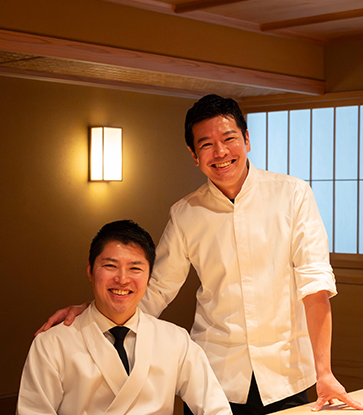The veteran Chinese chef allowed us to shadow him on one of his regular trips to the fish market, where he personally picked out different types of wild caught fish. In Chef Tam’s skilful hands, all types of fish are transformed into exquisite Chinese dishes - their delicate freshness brought to the fore with every bite.
Freshness Is Key In Cantonese Cooking
Wild-caught fish varieties get their vitality from swimming freely in the wide open seas from a young age. “We insist on only using wild-caught fish in Jade Dragon, including those from brackish waters, because you can taste their distinct freshness of their meat - thanks to their daily diet of sashimi,” he laughs.
Thanks to chef Tam’s perseverance, Jade Dragon has a consistent supply of different types of fresh fish species that change according to the season. In autumn, for instance, fatty fish such as yellow pomfret and Macau sole fish make their appearance on its menus.

Little wonder that one of chef Tam’s most popular signature dishes at Jade Dragon is, well, fish. Made of a wild caught local species, Macau sole, the fish meat is fried to a golden crisp.
He explains: “It can go with many different condiments and side dishes. Some diners like the fresh, light taste of the original, so we simply stir fry it with some leeks and seasonal vegetables such as bamboo shoots or kale. Other times, we’ll add in some minced olives, soy sauce or fermented black bean sauce to give it a more dense flavour.”

On top of that, he has cooked for some of the world’s top politicians and leaders, including members of the Thai, Japanese and Nepalese royal families. On why he decided to become a chef, he says: “My generation of chefs weren’t as lucky as the current generation are. We didn’t have formal culinary training before we joined the industry. Most of us got our jobs through recommendations from family of friends, myself included. An elementary school classmate of my father was working as a restaurant manager in an established Chinese restaurant, so I started there as a cleaner.”
But even prior to that, he had already had a budding interest in food as a teen and previously worked part-time in a cafe in high school, making sandwiches and pasta. After taking on a job as a cleaner, he worked his way up the ranks, across different stations in the kitchen, even running staff meals for his colleagues. “Everything I know about cooking, I picked up one lesson at a time,” he adds.
“Whether it’s vegetables, seafood or meats, we always cook according to the season. For example, the summers in Macau are more humid, so we cook more soups that have health benefits for the body, such as help to ‘alleviate dampness’. In the summer, we use more refreshing ingredients such as winter melon, lotus leaves or barley. In the autumn, we use ingredients that are nourishing for the lung and liver. For the winter - and this is not just for Cantonese - most people believe that we need ingredients that help to strengthen and warm the body, such as mutton and other game,” he explains. “Cooking with seasonal ingredients also means that they will be abundantly available in the markets, so we can pick the best ones among them for our menu.”
Chef Tam is also one of the rare few Chinese chefs who collaborate with researchers from the faculty of Chinese Medicine department at the Macau University of Science and Technology to design his menu.
“Herbs recommended by TCM doctors are often not the most delicious, so it made me think of collaborating with the faculty to create soups that are both tasty and yet have proven nutritional value.”

“I would call it ‘complete’, this is also what tradition calls for. Whether it’s wok-frying or double-boiling, as a Cantonese chef, I will draw on these techniques - and the freshest seasonal ingredients as I mentioned before - to bring a dish to its most complete and most perfect expression. Besides being complete, innovation is also key. This is something we strive for in the kitchen every day,” he says. Over the years, his passion for cooking has only grown.
“Being a chef is a pretty magical profession. If it can fly, walk or crawl, or if it grows out of the ground, mankind, over centuries of evolution, has managed to turn it into food. Being a chef is not only about skills and techniques, but also tapping on these original philosophies to turn every single ingredient that enters our hands into edible works of art - and the possibilities are endless.”
Recommended reading: View all Cantonese food stories here
This article was originally written by Tan Pin Yen in Chinese. Click here to read the original story.














